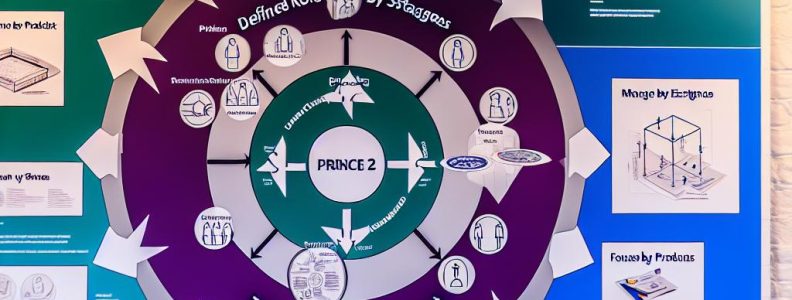Understanding PRINCE2
PRINCE2, short for PRojects IN Controlled Environments, represents a widely accepted structured project management methodology that finds relevance across a multitude of industries. It provides an effective framework designed to facilitate the control and organization of a project from its inception through to its completion. The primary emphasis of PRINCE2 is on dividing projects into manageable and controllable stages, which significantly enhances the likelihood of project success.
Key Features of PRINCE2
PRINCE2 encompasses a range of mechanisms that contribute to bolstering project success:
1. Detailed Planning: A foundational element of PRINCE2 is comprehensive and meticulous project planning prior to commencement. Each project is mandated to possess a solid business case that not only justifies its undertaking but also details expected returns and identifies potential risks.
2. Focus on Product Delivery: Unlike other methodologies that may focus predominantly on the completion of activities, PRINCE2 is distinctly outcome-oriented. It emphasizes clearly defining outputs or products, ensuring that all project activities directly contribute to achieving these predefined outcomes.
3. Structured Organization: PRINCE2 provides a structured framework which establishes clear roles and responsibilities. This organized structure helps eliminate any ambiguity, ensuring that all participants are well aware of their duties and the reporting relationships.
How PRINCE2 Enhances Communication
Effective communication is a critical component for the success of any project, and PRINCE2 incorporates specific structures designed to ensure clarity and efficiency in communication. Regular reporting and clear documentation form essential parts of the PRINCE2 methodology. By initiating these communication pathways early in the project lifecycle, PRINCE2 greatly reduces misunderstandings and enhances coordination among stakeholders, which is crucial for maintaining the project on track and aligned with its objectives.
Risk Management Capabilities
Risk management constitutes an integral segment of the PRINCE2 methodology. It involves processes that identify, assess, and mitigate risks throughout the entirety of the project’s duration. By anticipating potential issues and preparing suitable responses, PRINCE2 significantly minimizes the impact of these challenges on project outcomes. This proactive approach towards risk management not only improves the adaptability and resilience of projects but also positions project teams better to handle unforeseen issues effectively.
The Role of Training and Certification
Proper training in the application of PRINCE2 is crucial to harnessing the full benefits of the methodology. Certified practitioners often showcase a higher proficiency in applying PRINCE2 principles, which corresponds to more successful project execution. Various organizations provide training and certification programs offering a comprehensive and in-depth understanding of PRINCE2, equipping individuals with the necessary skills for effective implementation. These programs usually encompass all aspects of PRINCE2, from foundational knowledge to practitioner-level expertise, ensuring that practitioners are well-prepared to apply PRINCE2 methods in diverse project settings.
For those interested in enhancing their project management skills through PRINCE2 certification, a range of organizations offer extensive training programs. These cover all dimensions of PRINCE2, guiding participants from foundational comprehension to advanced practitioner levels.
Conclusion
Overall, PRINCE2’s structured approach provides a systematic method that significantly enhances project management processes, consequently improving success rates. Its concentrated focus on detailed planning, product-centric delivery, and effective risk management positions it as an indispensable tool for project managers who are intent on enriching project outcomes. The versatility of PRINCE2 across various industries further underscores its effective contribution to the attainment of project goals, making it a critical resource for organizations aiming for excellence in project execution. As businesses continue to recognize the challenges inherent in project management, the adoption of methodologies such as PRINCE2 is poised to grow, underlining the need for skilled practitioners adept in utilizing its principles to steer projects to successful conclusions.
Moreover, the methodology’s emphasis on training and certification enhances its accessibility to a wider demographic of project managers and organizations, encouraging a broader adoption and integration. With the comprehensive scope that PRINCE2 offers, paired with its robust training infrastructure, many find it an invaluable asset in navigating complex project landscapes. This structured approach not only aids in maintaining control over project variables but also ensures consistency in achieving quality outcomes, thereby fostering an environment conducive to the realization of strategic objectives. By integrating PRINCE2 into project management practices, organizations can benefit from a time-tested methodology that balances flexibility with a clear, structured framework, ultimately leading to sustainable project success.




